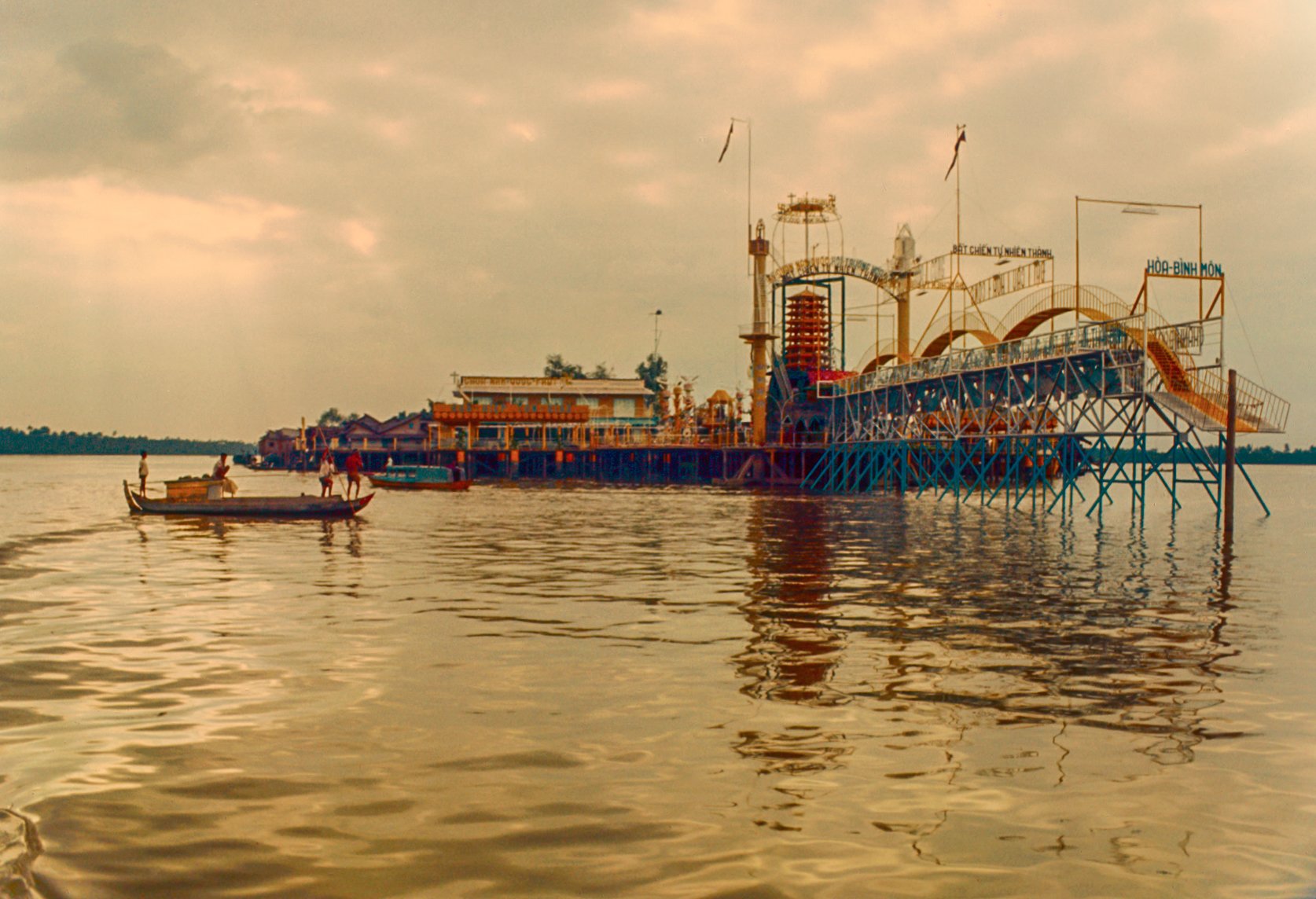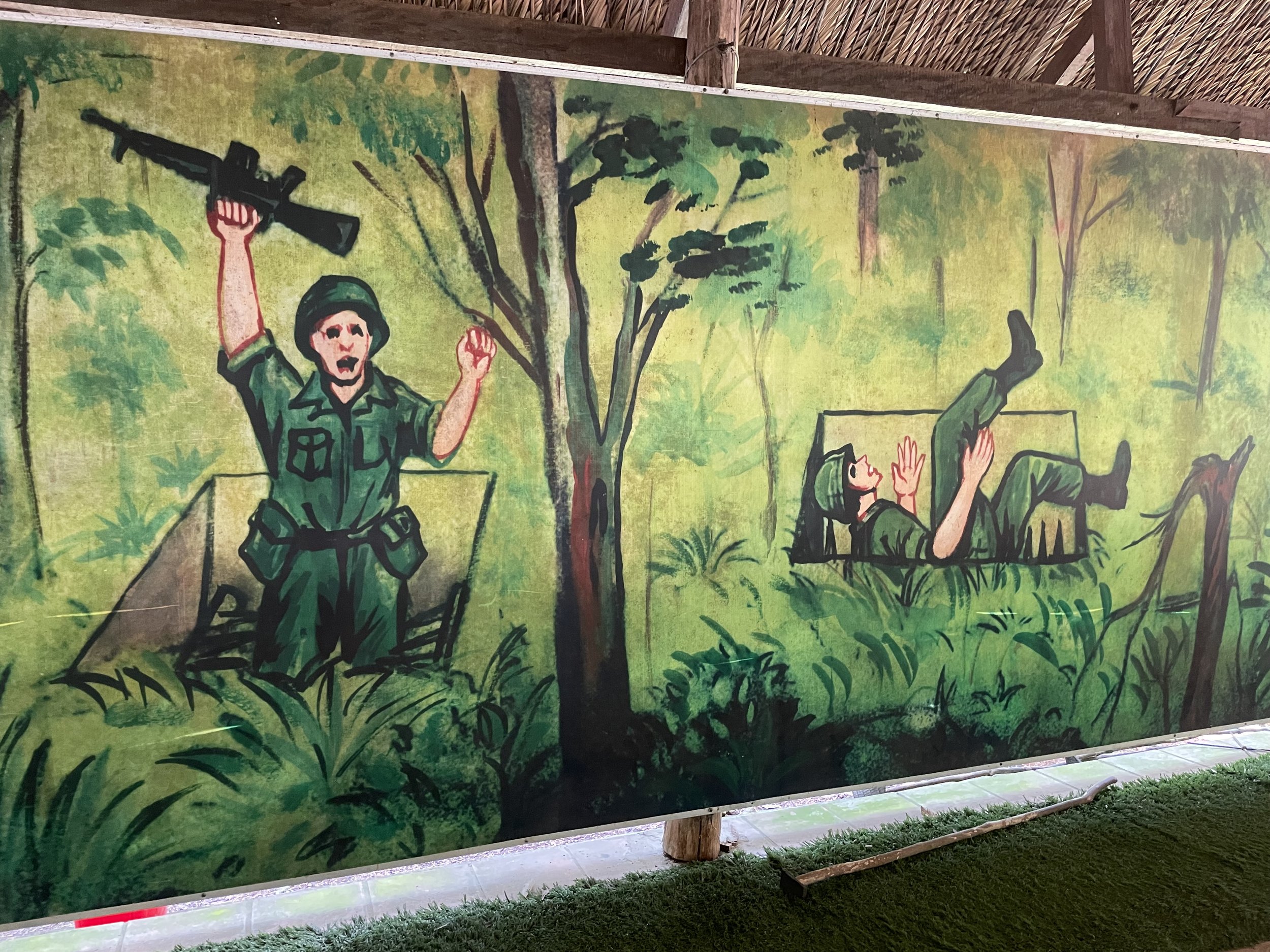Destination Mekong
The Mekong Delta contributes more than half of Vietnam’s rice production. The delta is economically important because of aquaculture fish farming. The Mekong Delta was also the place were the first uprising began against the South Vietnamese regime of Ngô Đình Diệm.
“Fish splash the pond - but where have the dragons gone?”
On my last day in Vietnam I took a one day trip to the city Mỹ Tho and one of the islands in the Mekong river. I wanted to take a local bus by myself, but that proved difficult, so I was booked on a tourist tour. You loose control over your time, but gain the company of some fellow travellers.
The tour was touristy. Before I knew I had a boa constrictor snake around my neck, only moments before I was holding a brood frame with buzzing honey bees for a photo opp. I felt a bit embarrassed because those are not the photos I normally take. I prefer not to bother animals.
The tour also comprised of several boat rides, which was fun. The tour guide was trying to learn us Vietnamese but with the language being a tonal language I was pretty sure I completely screwed up any tonal inflection. I did learn about the coconut religion, which is a fascinating story.
The islands in the Mekong river are traversed by narrow canals. The canal below is on Cồn Phụng, which translates as Island Fenghuang. Fenghuang is commonly translated as ‘Phoenix’ in English. It is a mythological bird found in Sinospheric mythology.
It is easy to imagine that the warm and wet climate of the delta is favourable for the production of rice and other produce. But when, after the war in the late 1970s, the hungry country needed rice, the Mekong delta was suffering from acidified soil. With the help of Dutch Wageningen University & Research the soil was restored. But the ecosystem is not safe. Climate change leads to flooding and the salinisation of the soil, which has already led to the reduction of rice cultivation. Rice is being replaced by different crops and the cultivation of shrimp.
Long read: Mekong Delta: Vietnam’s rice bowl transitions into a diverse food basket
One of the travellers on the tour was Santanu Kumar Deo (photo below) and his friend (the one holding the snake below). During lunch he choose the vegetarian option, which let me to mistakenly think he was a vegetarian. Turns out he is a devotee of Hanuman, which means you should (or can) eat vegetarian only on Tuesdays and Saturdays. It was a Tuesday. I was curious whether his family were devotees of Hanuman, but it shows the religious fluidity of India when he told me he choose this path by his own choice.
Coconut religion
Graduated as a chemical engineer Nguyễn Thành Nam (1910-1990) became a mystic and founded the Coconut Religion (Đạo Dừa) in 1963. Ông Đạo Dừa (Coconut Monk), as Thành was also known, or His Coconutship, built a floating pagoda in the ‘Coconut Kingdom’ on Cồn Phụng. According to legend he only consumed coconuts for three years. His religion gained up to four thousand followers, but was banned in 1975 by the communist regime for being a ‘cult’. The floating pagoda still exists. I saw a glimpse of it during the boat tour, but being on a tourist tour there was no time to visit the pagoda.
The floating temple of the Coconut Religion, photographed in 1969.
Tourism in Mỹ Tho resolves around four islands in the Mekong river,
War tourism
Another popular one day tour from Ho Chi Minh City, in the direction of Cambodja, is visiting the Củ Chi tunnels. At Củ Chi about 120 kilometers of tunnels used by the Viet Cong have been preserved. The museum is both a war memorial and a strange tourist attraction, which almost feels like an amusement park. I had expected a more solemn atmosphere, considering the deadliness of the tunnels. For fun you can even buy ammunition and fire an AK-47 Kalashnikov. When visiting the tunnels you can hear constant machine gun fire in the background. I had mixed feelings about the place.
Some of the tunnels were dug as early as the 1940s when the Vietnamese were fighting the French colonial authority. In the 1960s the Viet Cong expanded the tunnels as part of their successful guerrilla fighting tactic. In 1968 the tunnels played an important role in the Tet Offensive, which, although a military victory for the Americans, led the United States to the negotiating table.










